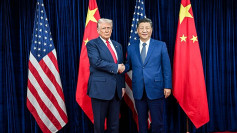Six major power producers in China called for aid from the Chinese government to lower the price of raw materials, including coal, to support China's proposal to lower electricity prices for industrial and commercial users by 10% this year. China plans to lower the coal prices to answer the call and encouraged miners to lower the benchmark grade to below 600 yuan ($87) a ton.
According to China Coal Resource, the spot price at Qinhuangdao port reached 634 yuan in March and it remained at its price despite an off-season for demand. The price is at 613 yuan on May 20.
Market data on Wednesday showed that there is a decline in mainland-listed coal producers. Yanzhou is down 1.8% in Shanghai and the Shenhua dropped by 1 percent. Shaanxi Coal Industry Co. declined as much as 2 percent. The benchmark Shanghai Composite Index is also down by 0.7%.
China's National Development & Reform Commission proposed to coal producers to reduce the costs of the raw materials in order for the power plants to deliver a cut to power prices. According to a source, the top economic planning agency wants to bring monthly contract prices down to a so-called "yellow zone" and is targeting benchmark coal with an energy value of 5,500 kcal/kg coal at less than 600 yuan.
The country is the world's top user and producer of coal. China, previously, secured a price range of about 500 to 570 yuan as it seeks to balance the needs of its power enterprises with those of miners. The crippled supply caused by mine inspections and import restrictions caused the domestic coal this year.
China's power generators are under pressure because of high raw material costs and the government's plan to cut electricity charges. The growing clean energy industry also added to the pressure.
China is leaning towards clean energy. Recently, the country implemented government policies as part of its drive to replace coal as fuel. The new policies in the country trigger the rise of demand for renewable energy and lower curtailment rates. It also threatens the coal-fired power producers in the country.
Recently, China's National Energy Administration released renewable portfolio standards (RPS). The RPS sets the foundation for the country's aim to raise the share of non-fossil fuels to 20% of primary energy consumption by 2030. The country is the leading wind power producer in the world, producing 211,392MW of installed capacity.






